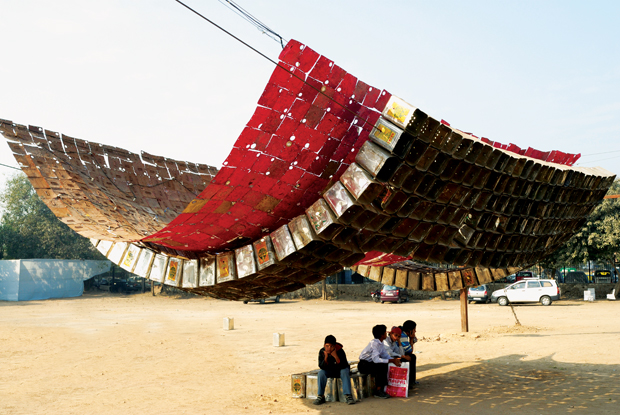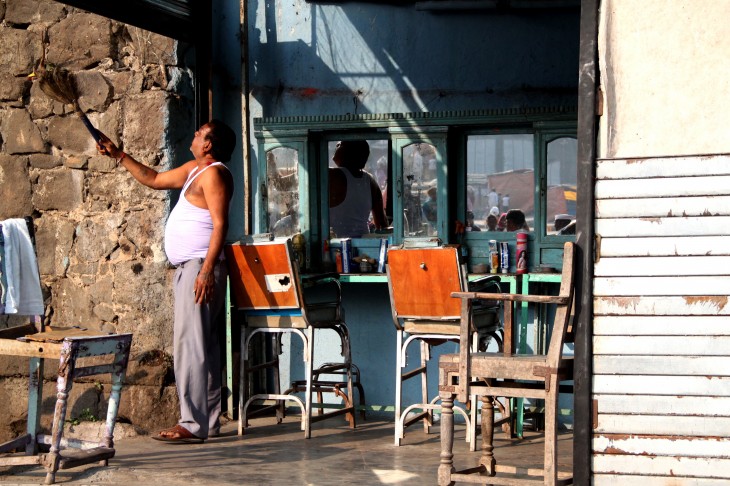New entrepreneurs in India are dealing with an entire gamete of social, cultural and economic change that are moulding the economic state and built environment at a phenomenally boggling rates. Although it has seen an example of china with more or less the same issues, it is more complex in India. It is more complex in terms of ground reality, as it is a kind of human centric development as India is a democracy. With this hypothesis, the process of an architect and urban designers has been marginalized. A brief study of the Economic background to the prospectus plays an important role to bridge these spectrums. Neglecting these spectrums will disconnect development from the context that is undergoing rapid change, like the one in India and therefore the practice becomes myopic.
The word socio-economic word has always been associated with the architectural line of work. It deals with the numbers surrounding the architectural project which actually is the foundation of a built reality. Although the numbers here are important, the exclusive information of the context is the key to success here. For example; India occupies 2.4% of the earth’s land, the per capita consumption of milk or petrol is the maximum as it also occupies 16% of the world population. So if some vehicle company from Italia (Alfa Romeo) decides to build cars for rich clients which is 20 % of Italia and not for 5 % of India, they might miss out on 5 million people with each percent. There is also a calculation that if every house in India and China will decide to make ‘Green Houses’ (as been defined by LEEDS), we might need 6 or 7 planets to accommodate that. So here specific data for development is sustainable, as sustainable cannot be affordable when it becomes formalized. Being specific to the part of the world I belong to, the question here is, ‘Is India’s growth sustainable?’
Belief in economic growth has come to be seen as a solution for all India’s social and political problems, including poverty, social exclusion and environmental degradation. This also explains why the economic growth rate is the only indicator of progress to which all Indian politicians, even on pay homage. India’s reluctance to slow down growth in order to pursue sustainability or inclusiveness is not irrational. The trauma of passage from a predominantly religious, feudal society to a more secular, egalitarian and industrial one requires the country to have an optimistic view of the future. India’s reluctance to slow down growth in order to pursue sustainability or inclusiveness is not irrational. The trauma of passage from a predominantly religious, feudal society to a more secular, and industrial one requires the country to have an optimistic view of the future.
The starting point for any successful alternative definitions of growth and progress is that they cannot be exclusively applied to developing and poor nations. This must be an inclusive, globe-spanning endeavor. Despite India’s rapid growth, over 33% of its households still have no access to electricity — and over 70% still use fuel-wood, twigs and animal dung for cooking. In 2011, non-commercial energy comprised 24% of India’s primary energy pie, following coal at 42%.Additionally, India’s rural communities rely on female labor to collect and burn vast amounts of carbon-based fuels. This is possible because the opportunity cost of “female energy” remains negligible as long as the women are uneducated and unskilled.
Another key factor little appreciated outside India is the way in which the “poor” actually subsidize the consumption and therefore the pollution caused by the “rich.” The world at large lauds India for its low levels of per capita energy consumption. And indeed, carbon emissions per person are 1.5 tons, which is one-third of the global average and less than one-tenth that of the largest emitters in the world. However, these low per capita consumption figures conceal a painful reality: that hundreds of millions of Indians remain without access to electricity. The quest here is how to maintain the balance between low consumption and equal distribution to the masses. On the other hand, upper and upper-middle class Indians living in cities consume very high levels of energy. These high levels are exaggerated by the fact that many upper-class Indians use back-up generators to add-on the electricity supply in many parts of the country. Thus, the low energy consumption by a large number of the poor conceals the high consumption levels of the rich by bringing down the average figures. A measure of the true challenges ahead becomes clear when one considers what is required in terms of power production in order to provide an acceptable level of electricity to the people. The United Nations has established a standard of 1,000 KWh per person as the minimum necessary for an acceptable quality of life.
In India’s case, that means that the country’s power-generating capacity would have to be increased three to four times its current level, even though the country is already one of the world’s largest energy consumers in the aggregate. Inconvenient facts like these put paid to the slow rate of progress in the international debate about sustainability, growth and the environment. One of the key environmental problems facing India is that of particle pollution from the combustion of fossil fuels. This has serious health consequences and with the rapid growth in the economy these impacts are increasing. At the same time, economic growth is an imperative and policy makers are concerned about the possibility that pollution reduction measures could reduce growth significantly.
Another severe concern which has been enlighten by the current Prime Minister of India, Narendra Modi , is ‘public sanitation’. The World Health Organization estimates that more than 600 million Indians lack access to a toilet. Open defecation is a cause of diarrheal disease that sickens and kills thousands of children in India every year, and the lack of toilets often puts women at risk of attack. In 2012, the minister of drinking water and sanitation at the time, Jairam Ramesh, redoubled the government’s efforts, starting the Clean India Campaign. But it barely got off the ground before national election campaigning began in 2013 and Mr. Ramesh’s party was voted out of office in May. That month, just after Mr. Modi became prime minister, two teenage girls were murdered and their bodies were found hanging from a tree near their village after they had ventured out at night to relieve themselves. Mr. Modi astutely used public anger to focus attention on the problem. He announced an ambitious national cleanliness campaign to begin on Gandhi’s birthday on Oct. 2, pledging that every school will have separate toilets for boys and girls by October 2015 and that by 2019 all Indians will have access to a toilet.
This will not be easy. Some Indians are repulsed by the idea of having a toilet, which they associate with uncleanliness and the caste now known as Dalits, in their home. Others, according to research by the National Council of Applied Economic Research, are wary of the hygiene and odor of seepage-pit toilets typically installed under government programs. Changing entrenched attitudes and building the 12.5 million toilets that the Ministry of Drinking Water and Sanitation hopes to have in place by 2019 will be a colossal challenge. PM. Modi’s continued leadership is needed, as is the participation of the private sector and nonprofit groups. Modi believes that ‘ Kachde se bhi kanchan ban sakta hai’-…Waste is wealth for him and he will rope in professional companies with machinery and technology. Adding that the project will not be left to politicians or bureaucrats and that the involvement of private companies and professional management will ensure that it is different from mega projects like MNREGA launched by the previous UPA regime. A special part of the project is about building 2 lakh toilets for women in 5,000 villages. The role models for the project are cities like Amsterdam, Singapore, Freiburg (Germany) and Kobe (Japan). The project will be implemented on a P4 (people-public sector-private sector-partnership) model. By 2022, the 75th year of independence, he wishes to make them model cities in terms of cleanliness, green cover and infrastructure. More than the dip in GDP, there are at least million infants dying because of unclean surroundings.
Owing to these issues and numbers around India, although it is still generalized, needs contextual economic sustainability. For example; if the cleanliness issue has to be solved, it has to be parametric, in the sense, it has to move from a smaller unit to branch into a broader level. But sustainable economy just cannot survive on only domestic solutions. The idea that we need a more socially inclusive and ecologically sustainable model for development has been around for a long time. The ways and means to achieve this are widely discussed. Inclusive development requires employment policies that can bring about a different primary income distribution. Sustainable growth, for its part, requires the creation of productive assets that conserve nonrenewable resources such as land, water and atmosphere and minimize environmental damage. These assets have to serve the ultimate goal of human well-being (housing, sanitation, food, water and energy) and also facilitate wealth creation (economic activity). The perceived link between well-being and growth will not be easy to break. As things stand, growth is the underlying basis of the advancement of social equality. It is also seen as the precondition for civil coexistence and governance. We have known for long that GDP is a poor measure of a nation’s well-being. Even Simon Kuznets, who was the first to devise the national accounts from which GDP evolved, was fully aware of that fact as far back as 1962.Kuznets warned that distinctions between quantity and quality of growth, its costs and returns, and the short and the long run, were important. And he wrote presciently, “Goals for ‘more’ growth should specify more growth of what and for what.”
The question that needs to be asked is not whether a new model is needed, but why the models that have been proposed are failing to make even a marginal impact on the current growth model?
Because although the GDP of India at the moment better than half of the world, it is still counted as a third world nation and being in that state, any new plan would create an effect throughout. So, the question of new models required in India is not the step towards a solution but chaos. The solution to India’s issues lies in through investigation of Culture, Design and Society.
 Source : http://www.iconeye.com/404/item/4035-jugaad-pavilion
Source : http://www.iconeye.com/404/item/4035-jugaad-pavilion

 Source : Author
Source : Author